Joseph Haydn’s Trumpet Concerto
Joseph Haydn’s Trumpet Concerto
Joseph Haydn wrote his "Trumpet Concerto in E flat major" in 1796. It is a piece in three movements, dedicated it to his friend Anton Weidinger, who had developed an improved trumpet which could play chromatically throughout all its range. With natural brass instruments being the norm, this represented an important advance. Weidinger's invention was not succesful, though, and natural trumpets were used until the 1830s, when valve instruments were first produced.
Haydn – Trumpet Concerto
Anton Weidinger was a member of the Vienna Court Orchestra. Weidinger had been experimenting since 1793 on a keyed trumpet, drilling four to six holes that were covered by key-operated pads, like those still found on today’s woodwind instruments. The design was eclipsed in the nineteenth century by a system of valves, but it was a worthy effort to free the trumpet from its limited range, and it generated two treasures of the trumpet’s concerto repertoire, this work by Haydn and another concerto that Weidinger commissioned from Johann Nepomuk Hummel.
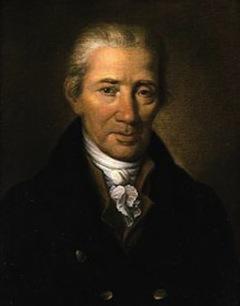
Anton Weidinger
Joseph Haydn is rightfully known as the “father of the symphony”—his 104 symphonies span the entire early history of the form. However, Haydn also wrote concertos. He composed over 40 concertos, many of which are now lost, mostly for members of the fine court orchestra of his employers, the Esterházy family. Several of these have remained in the repertory, most notably his concertos for horn, oboe and trumpet.
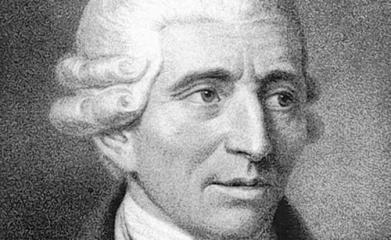
Joseph Haydn
Of these, his trumpet concerto, his very last essay in the form, is the most famous, and among Haydn’s most popular works. It is familiar in part because it is played often—it is one of the monuments of the solo trumpet repertoire. But it is also a truly first-rate piece of music, the first to contain truly free melodic writing for the instrument.
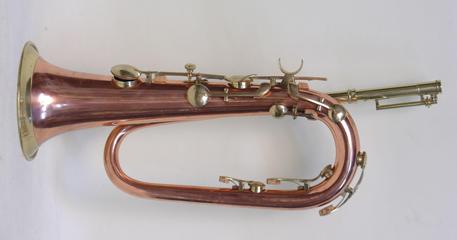
Keyed Bugle
By this time Haydn was largely an independent and very wealthy artist, having just returned from his second fabulously successful tour to London. Instead, the "Trumpet Concerto" seems to have been a genuine experiment and, perhaps, an act of friendship. The genial Haydn certainly knew Weidinger in Vienna, and there is some evidence that Haydn stood as best man at Weidinger’s wedding in 1792. Weidinger later toured Europe playing the concerto.
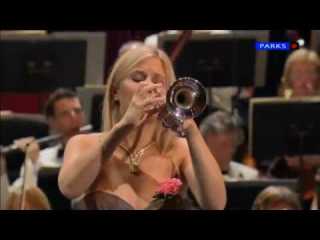
Alison Balsom plays Haydn's Trumpet Concerto
Haydn’s Trumpet Concerto in E flat major is composed in three movements (typical of a Classical period concerto), they are marked as followed:
I. Allegro (sonata)
II. Andante (sonata)
III. Allegro (rondo)
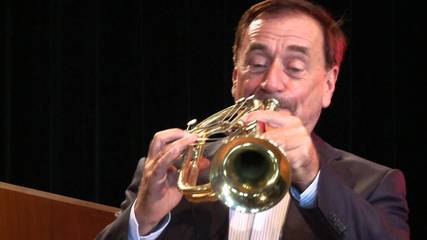
Markus Würsch plays Trumpet Concerto (keyed trumpet)
Haydn uses a well-established concerto form in this experimental work. The opening movement (Allegro) begins with a brief tutti section that lays out the main themes. The first trumpet entrance must have been a shock to the first audience: there is none of the usual brilliant fanfare-style writing of most 18th-century concertos, but a stepwise opening theme in the trumpet’s warm low register. True to form, there is a brief development, with some surprising turns to the minor, and near the end, Haydn leaves space for an improvised cadenza. In the Andante Haydn exploits the innovative capability of Weidinger’s trumpet to play chromatically (by half-steps) quite low in the instrument’s range. The movement is based on a pair of equally lyrical, songlike themes. The third movement (Allegro) is a rondo, whose main theme has a fanfare-style character that must have sounded a bit more familiar to Viennese audiences of the day. But there are also plenty of opportunities to play lines impossible on a natural trumpet and, other trills and ornamental passages that testify to Weidinger’s virtuosity.
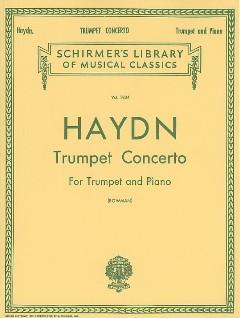
Haydn - Trumpet Concerto, 1804 Edition
Haydn was not a virtuoso himself, unlike his friend Mozart, or perhaps he did not have the character of a natural showman. Whatever the case may be, the Trumpet Concerto is highly virtuosic in style, and is Haydn’s last and one of his most popular orchestral works.
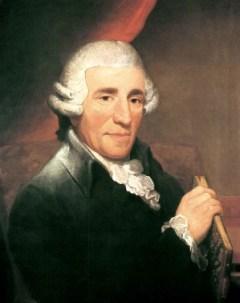
Joseph Haydn
As it happens, the two first concertos written for the new trumpet have become the greatest ever written in the genre. Never before and rarely since has the trumpet been so eloquent and (gasp!) beautiful. Remember that prior to this, the trumpet was relegated to marches and fanfares.
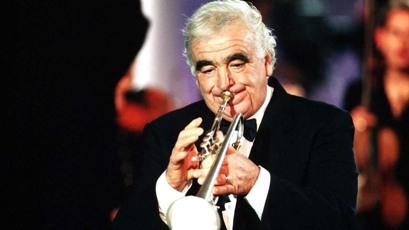
Maurice Andre plays Haydn's Trumpet Concerto
Haydn’s Trumpet Concerto would remain a jewel in the solo trumpet repertoire for centuries to come.

Keyed Trumpets (Klappentrompeten)
Last Updated (Sunday, 28 June 2015 20:31)








